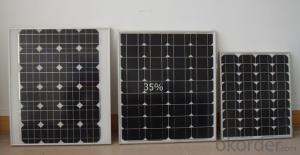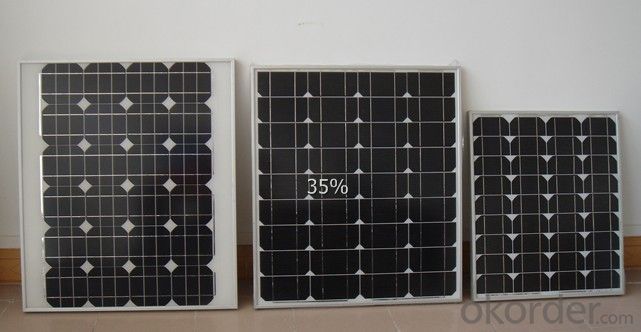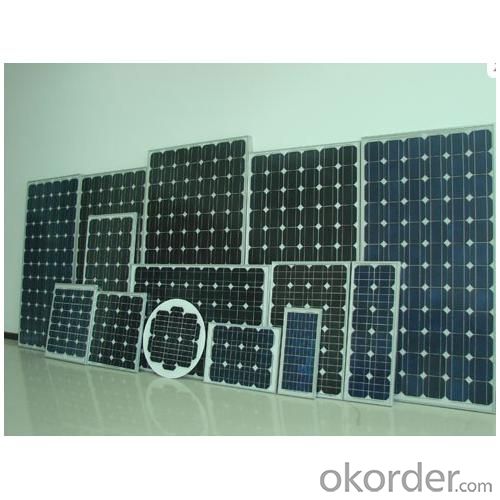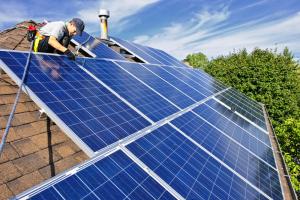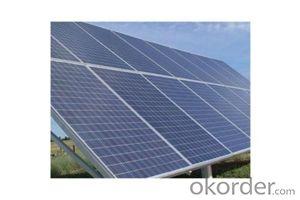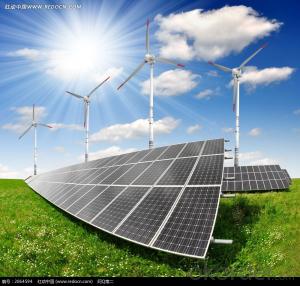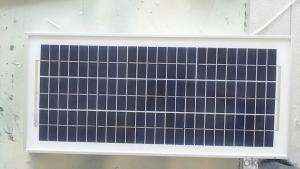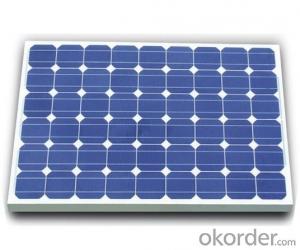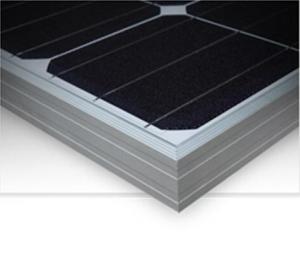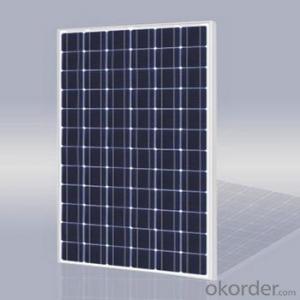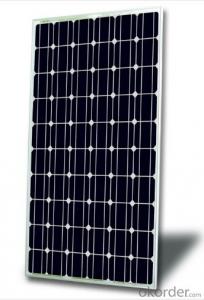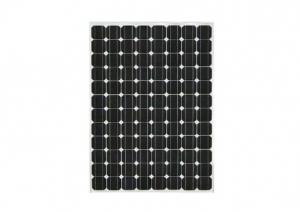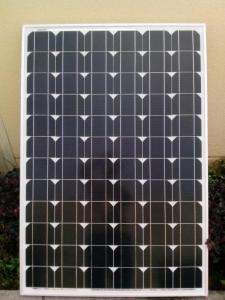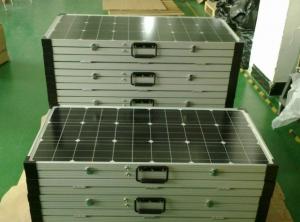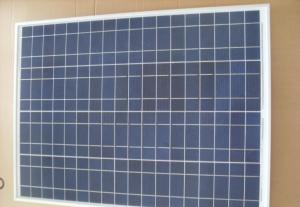Solar Panels Mcallen Tx - Monocrystalline Solar Module 36cells in 90w
- Loading Port:
- China main port
- Payment Terms:
- TT OR LC
- Min Order Qty:
- 100 pc
- Supply Capability:
- 10000 pc/month
OKorder Service Pledge
Quality Product, Order Online Tracking, Timely Delivery
OKorder Financial Service
Credit Rating, Credit Services, Credit Purchasing
You Might Also Like
Quick Details
| Place of Origin: | Zhejiang China (Mainland) | Brand Name: | CNBM | Model Number: | OL-90-36M |
| Material: | Monocrystalline Silicon | Size: | 1200*550*35 | Number of Cells: | 36 |
| Max. Power: | 90 | certification: | CE |
Packaging & Delivery
| Packaging Detail: | in box then in carton |
| Delivery Detail: | 10days |
Specifications
1)international quality standard
2)competitive price
3)energy saving and environment friendly
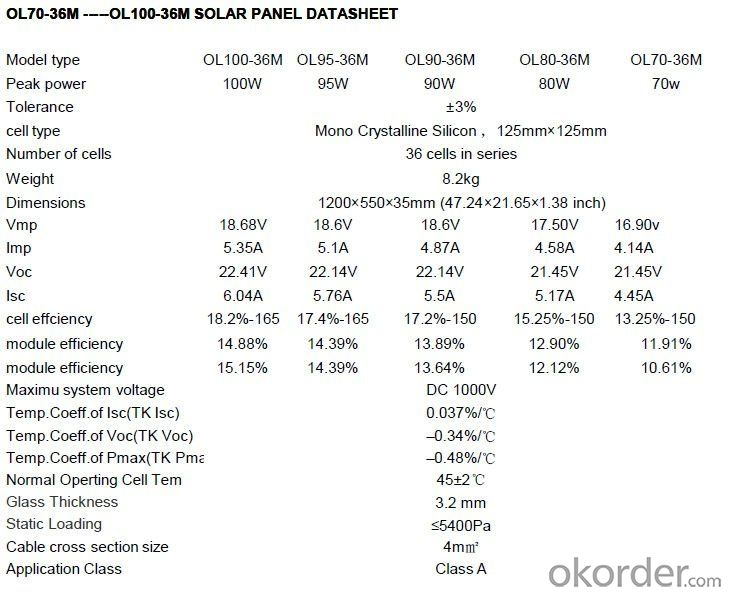
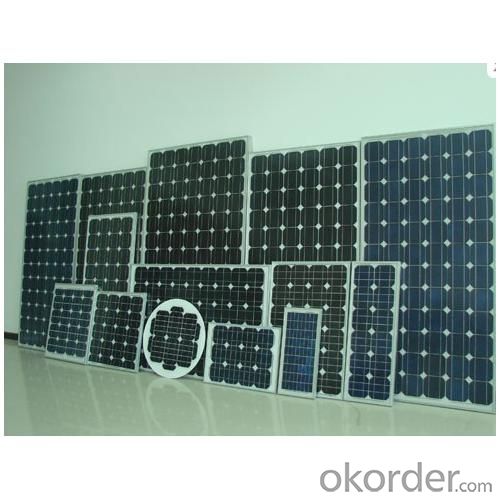
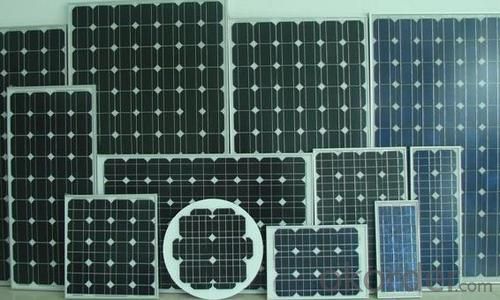

- Q: in a solar panel, i know that the electrons are knocked loose and used as energy, what happens to the protons?
- Here okorder /... Within this structure, the electrons are not really lost from the system. An electron just gets enough energy (from light) to be able to leave its atom, and float freely around the structure. Hence you have electrons in motion, which is the definition of electric current. If the lights go out, the electrons just settle back into one of the atoms that is missing an electron.
- Q: If a solar panel (using 36 3x6 solar cells) puts out 60 watts, how many panels would I need (for a house) if I use a max of 2300 kWh in a month? I checked my electric usage for the past 2 years and the kWh is usually lower but I wanted to use the most kWh used (2300) for my question. Thanks!
- One key piece of information missing is the average number of peak sun hours per day. This will vary by location. It is latitude, regional weather, and site shading must be considered. Another consideration is the loses. The 60 watt solar panel is a DC voltage. The 2300 kWh is for the AC power consumed. There are loses in the inverter to change the electricity from DC to AC. There are also loses for wire resistance, soiling of the panels, wire resistance, etc. To work out an example of the math, I'll use 5 peak sun hours and a total efficiency of 80%. The math can be worked out as a single formula but I'll break it into steps for you. (2300 kwh/month)(month/30.4 days) = 75.65 kWh/day (60 W)(5 psh)(80%) = 240 Wh/day = 0.24 kWh/day/panel # of panels needed = Energy use / Energy generated (75.65 kWh/day) / (0.24 kWh/day/panel) = 36 panels.
- Q: Can solar panels be used in areas with high levels of chemical pollutants?
- Yes, solar panels can be used in areas with high levels of chemical pollutants. While chemical pollutants in the air or water may affect the efficiency or performance of solar panels to some extent, they are still capable of generating electricity in such areas. However, regular cleaning and maintenance of the panels may be required to ensure optimal performance and longevity in polluted environments.
- Q: Can solar panels be used to power an entire office building?
- Yes, solar panels can be used to power an entire office building. With proper planning and installation, a sufficient number of solar panels can generate enough electricity to meet the energy needs of an office building throughout the day. This can significantly reduce or even eliminate the reliance on traditional energy sources, leading to cost savings and environmental benefits.
- Q: Can solar panels be used for powering a museum or cultural institution?
- Yes, solar panels can be used to power a museum or cultural institution. Solar energy is a renewable and sustainable source of power, making it an environmentally-friendly option for museums. By installing solar panels, these institutions can reduce their carbon footprint and lower their energy costs. Additionally, solar power can provide a reliable and consistent source of electricity, ensuring that the museum's operations are not disrupted during power outages or fluctuations in the grid.
- Q: How do solar panels affect the environment?
- Solar panels have a positive impact on the environment as they produce clean and renewable energy, reducing the need for fossil fuels. They help decrease greenhouse gas emissions, air pollution, and water usage associated with traditional energy sources. However, the production and disposal of solar panels can have some environmental impact, including the use of certain materials and energy during manufacturing. Overall, their benefits outweigh the potential drawbacks.
- Q: Can solar panels be used to power a construction site?
- Yes, solar panels can be used to power a construction site. By harnessing the sun's energy, solar panels can generate electricity that can be used to power various tools and equipment on the site, reducing the reliance on traditional power sources and lowering carbon emissions. Additionally, solar panels can be easily installed on temporary structures or mounted on portable frames, making them a viable and sustainable option for powering construction sites.
- Q: I have in mind a small solar panel that could be plugged into a wall socket. Do I need a converter or some kind of interference between the two power sources so there aren't any unpleasant explosions? I don't know much about this sort of thing so please be nice.
- You're quite right that the solar panel can't be directly connected. I sense that you want to start small, but unfortunately, it's hard enough to make a system with a dozen or more panels pay back. (It can, we have a system...) But with just one panel, maybe a small one, the economy of scale is gone. You need to buy a grid-tie inverter, which watt-for-watt will be more expensive than a regular size one, and for a small panel, the $$/watt value will be poor. There are some [illegal in most places] tiny grid-tie inverters that I see advertised on the web from time to time, with an ordinary plug that goes into the wall. Those are generally against electrical codes, and the danger is real. There is also a crop of micro-inverters being sold by companies such as Enphase. These are legitimate products, but will still be costly per watt, and ultimately, it will be hard to have a net savings over time with just one panel. Have you already taken the conservation steps like LED light bulbs, efficient appliances (especially refrigerator), insulation, and using a power strip to turn off loads that are not being used? That stuff isn't sexy, but saves money fast.
- Q: How much would it cost to make an average size house be able to depend on solar panels for all of its power?How many solar panels would you need and wear would you put them? Would the roof be large enough to support the panels needed?Do solar panels work well in higher latitudes like northern USA or southern Canada? Can you power your house for the whole year if you live in these environments? What kind of maintenance do solar panels require?
- There are several web sites you can search for and they will provide the answer on how big of a PV Solar Array you would need for your house. Several things need to be known, such as square footage of the home, how well the home is insulated, etc. The panels come in all sizes and wattage's depending upon application, so yes they should all fit on the roof. If you have a small roof get PV panels with higher wattage's. Yes, they will work in the northern latitudes but not as efficiently as near the equator. You might need more PV panels to make up the loss in power from the sun hitting at a lower angle. Generally, all you will need to do is periodically clean the glass covering of the PV Panels to get maximum sun light on the PV cells. In my region, near the 45 th parallel, a 600 square foot home with six inch insulated walls and R40 attic insulation can purchase a PV panel system for around $40,000. That includes the equipment to tie it into the power grid and the meter to measure how much you supply the grid during the day and how much you draw from the grid at night when the sun isn't shining. There are tax credits for retrofitting an existing home, but mostly it is new homes being built that are having the PV panel systems installed so the cost is added to the mortgage and the return on the investment is paid off over the life of the System (about 5 to 20 yrs.)
- Q: I have two solar panels and I have measured that they produce V by themselves. I am trying to generate .5V, but whenever I hook them up in parallel I get something like .02V. What it happening?
- . You want series, not parallel. (Add the voltages. Coonect '+' of the first to '-' of the next, and take your feed from the extreme ends.) 2. if you parallel them and you get less voltage than one alone, you got your polarity crossed up and are reading the difference between them.
Send your message to us
Solar Panels Mcallen Tx - Monocrystalline Solar Module 36cells in 90w
- Loading Port:
- China main port
- Payment Terms:
- TT OR LC
- Min Order Qty:
- 100 pc
- Supply Capability:
- 10000 pc/month
OKorder Service Pledge
Quality Product, Order Online Tracking, Timely Delivery
OKorder Financial Service
Credit Rating, Credit Services, Credit Purchasing
Similar products
Hot products
Hot Searches
Related keywords
